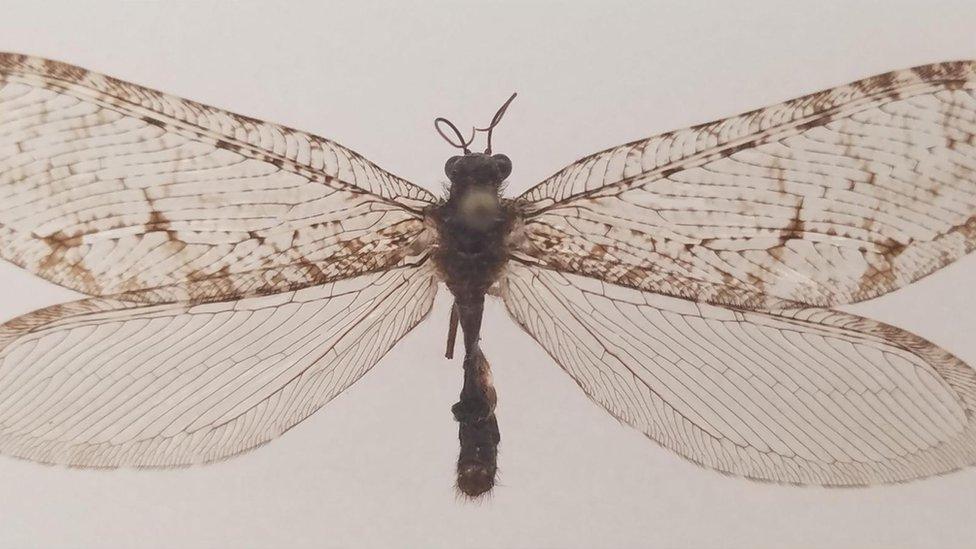Rare Jurassic-era bug found at Arkansas Walmart
- Published

The giant lacewing hasn't been seen in North America for 50 years
Back in 2012, Michael Skvarla was running to a Walmart in Arkansas for milk when he spotted a huge insect on the side of the building.
Its wingspan was nearly two inches across. Mr Skvarla studies insects, so he took it home - and forgot about it.
But in 2020, he showed it to his students in class. They realised it was something far more rare than expected: A giant lacewing.
He'd found a bug that hasn't been seen in eastern North America for 50 years.
"We all realised together that the insect was not what it was labelled," said Codey Mathis, one of Mr Skvarla's entomology students at Penn State.
Mr Skvarla, now director of Penn State University's Insect Identification Lab, recently co-authored a paper about the discovery, external, made when he showed the bug to students in an online class.
That wide wingspan was the clue that led Mr Skvarla and his students to spot, mid-lecture, what they'd found.
"It was so gratifying to know that the excitement doesn't dim, the wonder isn't lost," Mr Mathis said. "Here we were making a true discovery in the middle of an online lab course."
Mr Skvarla later confirmed the find through molecular analysis.
The giant lacewing, or Polystoechotes punctata, is a large insect from the Jurassic Era. It was once widespread, but mysteriously disappeared from eastern North America sometime in the 1950s.
Scientists suspect, external the disappearance may have been due to pollution, artificial light, non-native predators or a number of other factors.
Mr Skvarla's giant lacewing marks the first time the species has ever been discovered in Arkansas. It "suggests there may be relic populations of this large, Jurassic-Era insect yet to be discovered," he says.
That Arkansas Walmart is located in the Ozark Mountains. The area is under-studied but could be a biodiversity hotspot, say Mr Skvarla and his co-author J. Ray Fisher of Mississippi State University.
It's an ideal place for "a large, showy insect" to hide undetected, they say. Mr Skvarla's specimen could mean there is "a rare, surviving eastern population of giant lacewings that evaded detection and extinction". He's hopeful the discovery may lead to more.
"A finding like this really highlights that even in a run-of-the-mill situation, there are still a tremendous number of discoveries to make about insects," he says.
- Published20 April 2022

- Published29 January 2023
